#cheloniidae
Explore tagged Tumblr posts
Text
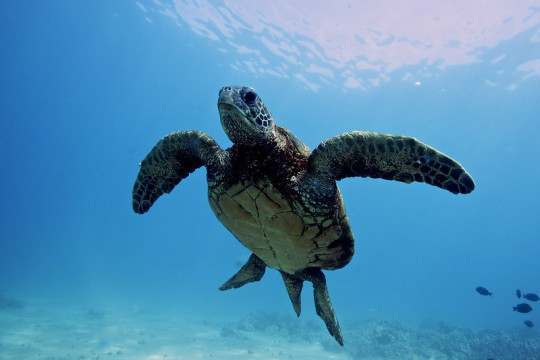
A green sea turtle (Chelonia mydas) in the Hawaiian Islands Humpback Whale National Marine Sanctuary
by Ed Lyman
#green sea turtle#sea turtles#turtles#reptiles#chelonia mydas#chelonia#Cheloniidae#testudines#reptilia#chordata#wildlife: hawaii#wildlife: north america
25 notes
·
View notes
Text

Green Sea Turtle (Chelonia mydas), family Cheloniidae, Durban, South Africa
ENDANGERED.
photograph by Johan Marais
413 notes
·
View notes
Text
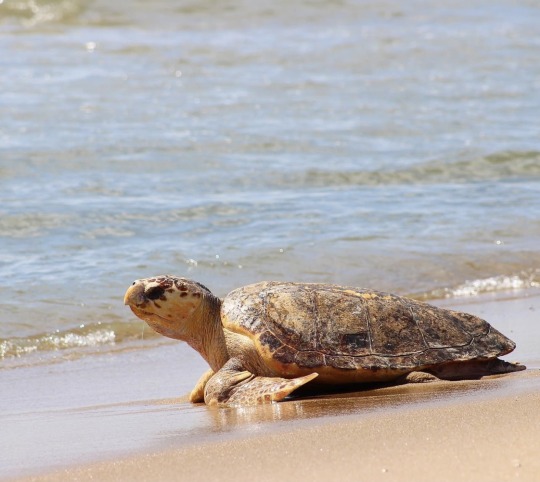
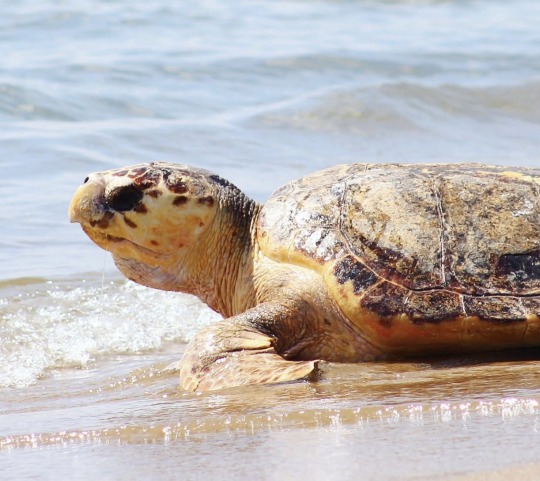
Loggerhead Sea Turtle (Caretta caretta) - (c) SaritaWolf - please do not repost
77 notes
·
View notes
Note
green sea turtle?
Absolutely!


#endangered species#endangered animal#atlantic ocean#pacific ocean#indian ocean#green sea turtle#pacific green turtle#sea turtle#marine animals#reptilia#reptile#herpblr#testudines#cyptodira#cheloniidae#animal polls#poll blog#my polls#animals#polls#tumblr polls
24 notes
·
View notes
Text
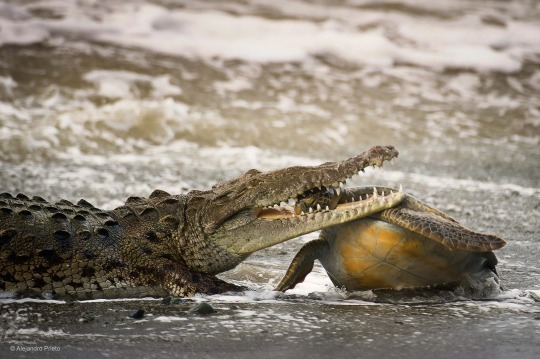
Corcovado National Park, on the Pacific coast of Costa Rica, is accessible only by boat or aircraft. Early one morning, Alejandro heard there were bull sharks near the beach and set off to look for them. It wasn't long before he heard a very loud noise - splashing and a hammering sound. Out of the sea came a huge crocodile with a large green turtle in its mouth, which was flapping its flippers and opening and closing its eyes. 'With a fast movement, the crocodile held the turtle by its flipper,' says Alejandro, 'and then, with a flick of its jaws, grabbed the still-living reptile by its head. I willed the crocodile to be still for a moment, while I struggled to keep the camera steady.' He managed just one shot before the crocodile headed for the sea and the mouth of the river, clutching its strange prey.
American Crocodile & Green Sea Turtle | Alejandro Prieto
#dispatch#cheloniidae#crocodylidae#cheloniinae#chelonia#crocodylus#chelonia mydas#crocodylus acutus#american crocodile#green sea turtle#alejandro prieto
5 notes
·
View notes
Text



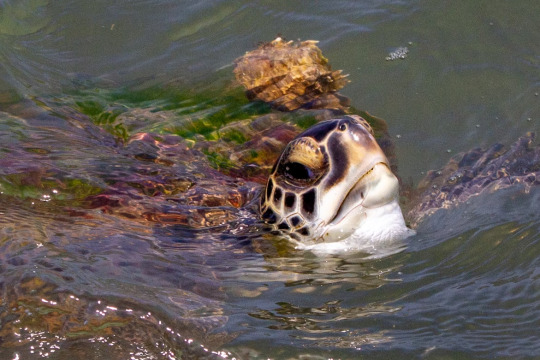


Green Sea Turtle - The Port A Jetty, East Cotter Avenue, Port Aransas, Texas, USA
Joshua J. Cotten
Scientific name: Chelonia mydas
Conservation status: Endangered (Population decreasing)
Mass: 350 lbs (Adult)
Class: Reptilia
Domain: Eukaryota
Family: Cheloniidae
Genus: Chelonia; Brongniart, 1800
The green sea turtle, also known as the green turtle, black turtle or Pacific green turtle, is a species of large sea turtle of the family Cheloniidae. It is the only species in the genus Chelonia.
Green turtles are found worldwide primarily in subtropical and temperate regions of the Atlantic, Pacific, and Indian Oceans, and in the Mediterranean Sea. In U.S. Atlantic and Gulf of Mexico waters, green turtles are found in inshore and nearshore waters from Texas to Maine, the U.S. Virgin Islands, and Puerto Rico.
#The Port A Jetty#East Cotter Avenue#Port Aransas#Texas#USA#US#United States#United States of America#North America#Turtles#Turtle#Sea Turtle#Green Sea Turtle#Wildlife#TXWildlife#Chelonia mydas#Reptilia#Eukaryota#Cheloniidae#Chelonia
7 notes
·
View notes
Text
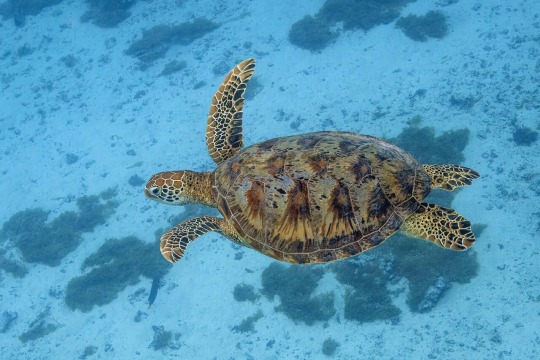
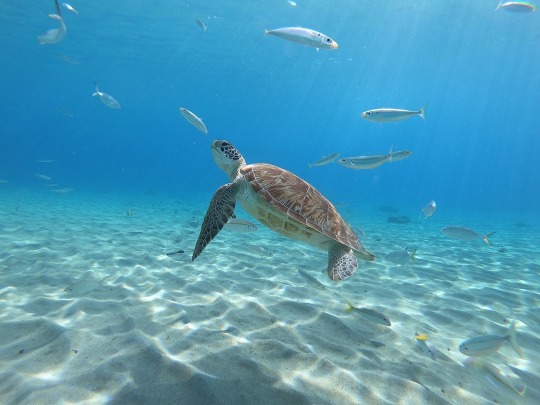


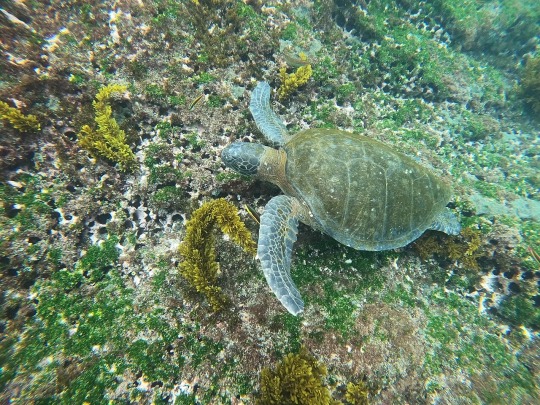
Range: Worldwide tropical and subtropical oceans
34 notes
·
View notes
Text
As this year’s sea turtle spawning-and-nesting period nears an end, Cancún municipal officials have reported that roughly 950,000 hatchlings have been released and made their way to the ocean. Fernando Haro Salinas, director of ecology for Benito Juárez municipality, told reporters this week that the majority of the hatchlings were green sea turtles (Chelonia mydas), locally known as tortuga blanca. While three or four of the more than 50 incubation sites were still active, Haro called this year’s season a success. “The total number of arrivals was slightly less than last year, but still quite a high number,” Haro told reporters. Haro said this is not unusual, explaining that it is common for a high spawning season to be followed by a lower one, according to Diario Cambio 22. Last year in the municipality, more than 11,000 nests were identified with an estimated 1,282,839 eggs from which roughly 1,205,000 hatchlings made their way to the sea.
continue reading
#mexico#animal conservation#green sea turtle hatchlings release#green sea turtle#ord: testudines#fam: cheloniidae#chelonia mydas
0 notes
Text
Round 3 - Reptilia - Testudines
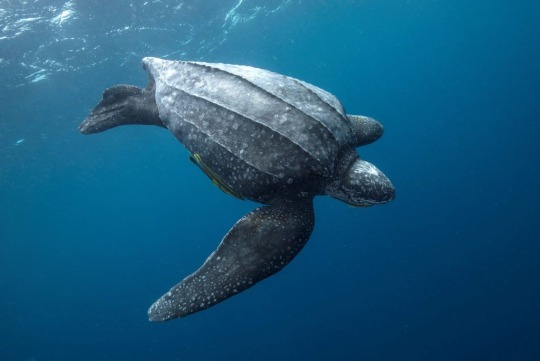



(Sources - 1, 2, 3, 4)
Testudines, commonly known as “turtles”, are a unique order of reptiles. They are divided into two major clades: Pleurodira (“side-necked turtles”) and Cryptodira (“hidden-neck turtles”), which differ in the way their head retracts. The are composed of the living families Chelidae (Austro-South American side-neck turtles), Pelomedusidae (African side-necked turtles), Podocnemididae (“big-headed turtles” and South American side-necked river turtles), Chelydridae (“snapping turtles”), Dermatemydidae (“Hickatee”), Kinosternidae (“mud turtles” and “musk turtles”), Cheloniidae (“sea turtles”), Dermochelyidae (“Leatherback Sea Turtle”), Platysternidae (“Big-headed Turtle”), Emydidae (“terrapins”), Geoemydidae (Eurasian pond and river turtles and Neotropical wood turtles), Testudinidae (“tortoises”), Carettochelyidae (“Pig-nosed Turtle”), and Trionychidae (“softshell turtles”).
Turtles are most known for their modified, fused ribs that form an armored carapace. They also have a flattened belly-plate called a plastron. Their shell is mostly bone, covered by keratin scales called scutes. They shed their scutes as they grow, with older scutes peeling off of the newer, larger scutes beneath. As defense, Pleurodirans draw their necks sideways, hiding their head under the overhang of their carapace. Meanwhile, most Cryptodirans can fold their entire neck inside their shell. Box Turtles (genera Cuora and Terrapene) also possess a hinged plastron which allows them to seal themselves tightly within their own skeleton. Due to their streamlined bodies, sea turtles (superfamily Chelonioidea) cannot retract their head and limbs into their shells for protection. Turtles are found in many environments, on most continents, some islands, and most of the ocean. Some are terrestrial, some are freshwater, and some are marine. Some are herbivores, most are omnivores, and some are pure carnivores.
All turtles lay eggs. They do not form pair-bonds or social groups, and have a wide range of mating behaviors. In terrestrial species, males are often larger than females, and will fight with each other for the right to mate. For most semi-aquatic species, combat happens less often, and males will pursue females. In fully aquatic species, males are often smaller than females and rely on courtship displays to gain mating access. All turtles lay their eggs on land, although some lay eggs near water that rises and falls in level, submerging the eggs and signaling them to hatch. Most turtles create a nest for their eggs, digging a chamber into the ground. Depending on the species, the number of eggs laid varies from one to over 100. Eggs can be hard or soft-shelled. Most mother turtles do not perform parental care other than covering their eggs and immediately leaving, though some species guard their nests for days or weeks. Most species have their sex determined by temperature. In other species, sex is determined genetically. Hatching young turtles break out of the shell using an egg tooth, a sharp projection that exists temporarily on their upper beak. Hatchlings dig themselves out of the nest and find safety in vegetation or water. Most species grow quickly during their early years and slow down when they mature.
Testudines are not closely related to the two major living clades of Reptilia, Lepidosauria and Archosauria, so their exact place on the reptile tree has historically been disputed. The most recent evidence points to them being closer related to archosaurs than to lepidosaurs, but their ancestors are estimated to have split 255 million years ago during the Permian. The oldest known members of the Pleurodira lineage are the Platychelyidae, from the Late Jurassic. The oldest known unambiguous Cryptodire is Sinaspideretes, a close relative of softshell turtles, from the Late Jurassic of China. Turtles began to diversify during the Cretaceous.

Propaganda under the cut:
The largest living species of turtle is the Leatherback Sea Turtle (Dermochelys coriacea), which can reach over 2.7 m (8ft 10in) in length and weigh over 500 kg (1,100 lb).
A turtle was the symbol of the Ancient Mesopotamian god Enki from the 3rd millennium BC onward.
If a female sea turtle does not want to mate, she has multiple ways of refusing a male’s advances. Her larger size and strength may allow her to simply swim away faster, or she may bite the male. She may take up a refusal position with her body vertical, her limbs widely outspread, and her plastron facing the male, keeping her rear away from him. If water is too shallow for the refusal position, the female may resort to beaching herself, as males are not adapted to come ashore.
In Hindu mythology, the World Turtle, named Kurma or Kacchapa, supports four elephants on his back; they, in turn, carry the weight of the whole world on their backs. The turtle is one of the ten avatars or incarnations of the god Vishnu.
There is experimental evidence that the embryos of Chinese Pond Turtles (Mauremys reevesii) can move around inside their eggs to select the best temperature for development, thus choosing their sex.
The Yangtze Giant Softshell Turtle (Rafetus swinhoei) is one of the most endangered animals in the world, considered to be functionally extinct. The species has a known population of only 1 in captivity and potentially 1 in the wild, with no remaining fertile females. Conservation teams continue to monitor lakes and ponds in China and Vietnam and interview local communities to gather more information about potential surviving individuals. Efforts are also underway to explore new areas of habitat that could support this species.
An ancient Greek myth told that only the tortoise refused the invitation of the gods Zeus and Hera to their wedding, as it preferred to stay at home. Zeus then ordered it to carry its house with it forever. Not the worst Zeus curse by far, tbh.
The oldest known living turtle, and land animal, is said to be a Seychelles Giant Tortoise (Aldabrachelys gigantea hololissa) named Jonathan, who is estimated to be 192 as of 2025. He lives on the grounds of Plantation House, the official residence of the governor of Saint Helena and is cared for by the government. The Saint Helena five-pence coin depicts Jonathan on one side.
Among vertebrate orders, turtles are second only to primates in the percentage of threatened species. They face many threats, including habitat destruction, hunting, the pet trade, pollution, light pollution, and climate change.
Chinese markets have sought to satisfy an increasing demand for turtle meat with farmed turtles, even turning to American markets to cover their decreasing supply, as harvesting wild turtles is legal in some American states.
Threatened species of turtles, such as the critically endangered Radiated Tortoise (Astrochelys radiata), Angonoka Tortoise (Astrochelys yniphora), Philippine Forest Turtle (Siebenrockiella leytensis), Yellow-headed Box Turtle (Cuora aurocapitata), Indochinese Box Turtle (Cuora galbinifrons), Golden Coin Turtle (Cuora trifasciata), McCord's Box Turtle (Cuora mccordi), and the Roti Island Snake-necked Turtle (Chelodina mccordi) are in high demand in the exotic pet trade, and their populations have plummeted as poachers capture them from the wild.
Large numbers of sea turtles are accidentally killed in longlines, gillnets, and trawling nets as bycatch, or struck by boats. In Australia, Queensland's shark culling program, which uses shark nets and drum lines, has killed over 5,000 turtles as bycatch between 1962 and 2015, including 752 critically endangered ones. Light pollution at night threatens young sea turtles who use the moon to guide them toward the ocean, instead crawling into brightly-lit city streets where they are struck by cars or fall into storm drains.
Native turtle populations can also be threatened by invasive ones. The central North American Red-eared Slider (Trachemys scripta elegans), often kept as pets and then released into the wild, has been listed among the "world's worst invasive species", outcompeting native turtle species in eastern and western North America, Europe, and Japan.
As of 2021, turtle extinction is progressing much faster than during the Cretaceous-Tertiary extinction. At this rate, all turtles could be extinct in a few centuries.
#animal polls#round 3#reptilia#testudines#I had to see a panic attack inducing gif in the top results when I searched for snapping turtle gifs so don’t look that up#for the record there is absolutely no reason to feed live rodents to turtles other than shock value and a desire to be cruel#just throwing that out there
120 notes
·
View notes
Text
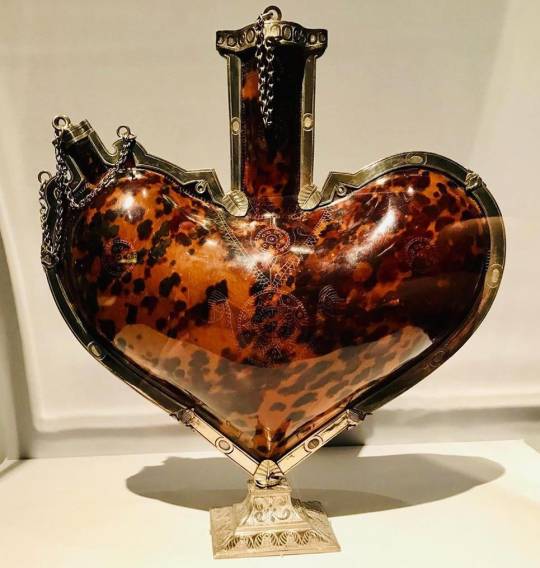
Heart-shaped flask made of tortoiseshell, with Iberian mounts. Gujarat, India, 1580
Tortoiseshell from the Hawksbill turtle (eremochlys imbricate), silver
"The hawksbill sea turtle (Eretmochelys imbricata) is a critically endangered sea turtle belonging to the family Cheloniidae. It is the only extant species in the genus Eretmochelys. The species has a global distribution that is largely limited to tropical and subtropical marine and estuary ecosystems." Wikipedia
#reddit#artefactporn#munakatasennin#heart shaped#heart#02/07#flask#iberian#mounts#gujarat#india#1580#1580s#1500s#art#unknown artist#tortoiseshell#silver#hawksbill turtle#turtle shell#metal work#critically endangered species#endangered#endangered species#antique#metmuseum.org#leep year#16th century#wikipedia
46 notes
·
View notes
Text

A green sea turtle (Chelonia mydas) in the Hawaiian Islands Humpback Whale National Marine Sanctuary
by Ali Bayless
#green sea turtle#sea turtles#turtles#reptiles#chelonia mydas#chelonia#Cheloniidae#testudines#reptilia#chordata#wildlife: hawaii#wildlife: north america
342 notes
·
View notes
Note
do you have any good sea turtles?
I have only the most excellent of sea turtles for you my little cock sparrow!

Green Sea Turtle (Chelonia mydas), family Cheloniidae, Moorea, South Pacific
ENDANGERED.
Named not for any external color, but for the greenish color of their subcutaneous fat (which comes from the diet of sea weed/algae).
photograph by Charles J. Sharp
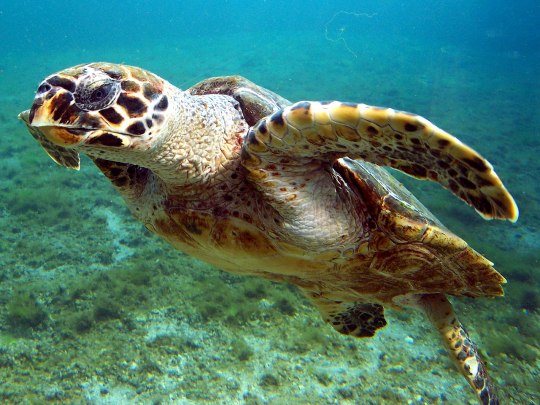
Hawksbill Sea Turtle (Eretmochelys imbricata), family Cheloniidae, Reunion Island, Indian Ocean
CRITICALLY ENDANGERED.
photograph by B. Navez
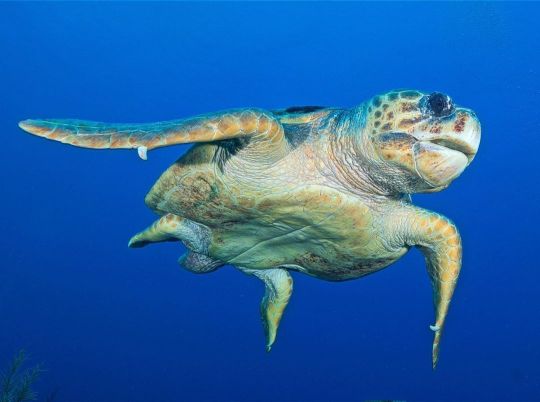
Loggerhead Sea Turtle (Caretta caretta), family Cheloniidae, Grand Cayman, Caribbean Sea
Vulnerable.
photograph by Gregory Piper
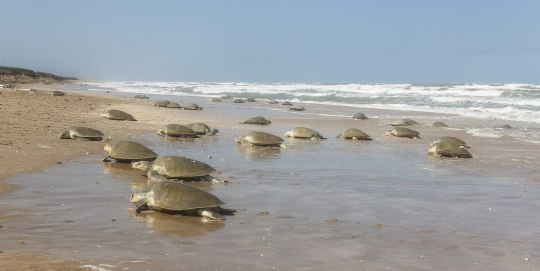
Kemp's Ridley Sea Turtle (Lepidochelys kempii), females coming ashore to lay eggs, family Cheloniidae, Tamaulipas, Mexico
CRITICALLY ENDANGERED.
This mass or group egg laying event is called an "arribada".
photograph by Hrchenge
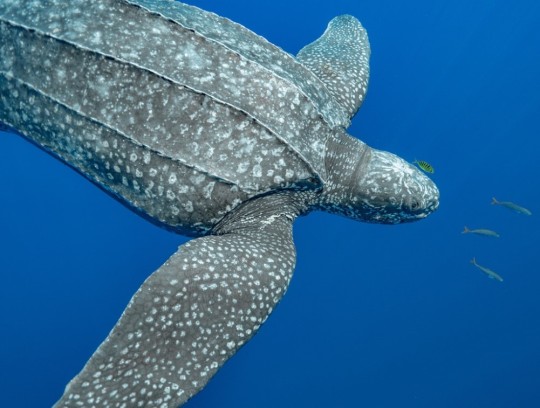
Leatherback Sea Turtle (Dermochelys coriacea), family Dermochelyidae, West Papua
The largest turtle in the world, and the heaviest known non-crocodilian reptile, reaching lengths of up to 1.8 metres (5 ft 11 in) and weights of 500 kilograms (1,100 lb).
Unlike most reptiles, their skin does not have scales.
This is also the deepest diving and widest ranging (Migratory) species of turtle!
Vulnerable.
photograph by Azure27014
309 notes
·
View notes
Text
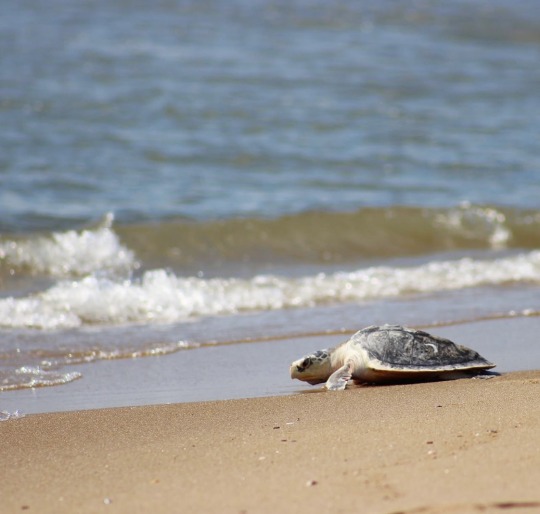
Kemp's Ridley Sea Turtle (Lepidochelys kempii) - (c) SaritaWolf - please do not repost
#this was during a release but I guess it’s technically the most endangered animal I’ve ever seen/photographed in the wild#Reptilia#Testudines#Cryptodira#Cheloniidae#Lepidochelys#critically endangered
2 notes
·
View notes
Text
Wet Beast Wednesday: leatherback sea turtle
When most people think of big turtles they think of the giant tortoises of the Galapagos. Those may be the biggest land turtles., but in the water, life can get bigger. Much like how whales get bigger than any land mammal, the viscous and buoyant properties of water helping counteract gravity lets sea turtles get bigger than their land counterparts. This Wet Beast Wednesday I'm discussing the largest of all turtles, the mighty leatherback.

(Image: a leatherback sea turtle swimming just below the ocean's surface. It is a very large turtle with ridges running down its shell and its front and hind legs modified into large, paddle-like flippers. It is dark gray all over, with white spots. End ID)
Leatherback sea turtles (Dermochelys coriacea) is not only the largest turtle, it's the heaviest of all living reptiles that aren't crocodilians. Adults average 1.8-2.2 m (6-7.2 ft) in length and 250-700 kg (550-1,540) lbs, with some variation in size based on region. Leatherbacks are the only living members of the family Dermochelyidae while the other 6 living species are all in the family Cheloniidae. This gives leatherbacks multiple anatomical differences from other sea turtles. One of these differences gives the leatherbacks their common names. Instead of a bony shell made of scutes, their shells are made of thick, oily and leathery skin that is embedded with small bony growths called osteoderms. The thick skin and osteoderms provide protection and allow pressure to distribute across the shell, making the shells highly resistant to being bitten trhough and highly resistant to cracking. Seven prominent ridges run down the length of the shell. The shape of the shell makes leatherbacks the most hydrodynamic of all sea turtles. The shell's shape and structure provides it with a high resistance to pressure, useful as leatherbacks dive deeper than any other sea turtle.

(Image: a leatherback sea turtle seen from the front with its mouth open. The head has a beak instead of teeth and the interior of the mouth is fleshy and pink. End ID)
Leatherback sea turtles are powerful swimmers. Their powerful front flipper provide propulsion while the rear flippers are used for steering. The flippers can grow up to 2.7 m (8.9 ft) long, making them the largest of all sea turtles both in overall size and in relation to body size. Those flippers make the leatherback the fastest non-bird reptile, able to reach 35.3 km/h (21.9 mph), though they usually swim much slower. Of all the reptiles to be the fastest, I would never have guessed it would be a turtle. Leatherback beaks are fragile and not suited for biting through anything but soft-bodied animals, so they swallow most of their food whole. The throat is lined with backwards-facing spines that prevent prey from swimming back up the throat. While leatherbacks have scaly hides like other reptiles, they are the only reptile whose scales do not contain the structural protein beta-keratin.

(Image: the mouth of a leatherback being held open to reveal the interior. It is pink and fleshy and lined with backwards-pointing spikes. End ID)
Unlike most (non-bird) reptiles, leatherbacks maintain a core body temperature higher than the surrounding environment. It was formerly believed that this endothermy was established through an increased metabolism, though more recent measurements have establised that leatherbacks do not have a metabolic rate much higher than would be expected for a turtle of their size. It is now thought that body heat is maintained through heavy muscle activity. Leatherbacks are almost always actively swimming and spend at little as 0.1% of their day resting. By constantly swimming, their muscles generate heat. This body heat is then retained through a countercurrent heat exchange system that warms blood before it reaches the core and a thick layer of fat, allowing leatherbacks to inhabit water much colder than any other sea turtle.

(Image: a leatherback sea turtle on the beach, presumably a mother laying eggs. Multiple children are watching it and an adult is roping off the area around it to keep it safe. End ID)
Leatherback sea turtles are found worldwide and have the largest range of any turtle. Thanks to their high body heat, leatherbacks can live in waters as far north as Alaska and as far south as Aotearoa/New Zealand. Scientists have observed three genetically distinct populations, one in the Atlantic ocean and one each in the east and west Pacific Ocean. In addition, there are two other proposed populations, one in the Indian Ocean that is understudied and one in the South China Sea that is nearing extinction. They spend most of their lives in the open ocean, hunting prey. The primary prey of the leatherback sea turtle is jellyfish and they have to eat a lot of them to maintain their size. Other food sources include siphonophores, salps and pyrosomes, small fish, small crustaceans, and seagrass and seaweed. Leatherbacks play an important role in their environments by keeping jellyfish populations under control. Excessive jellyfish can overfeed on the plankton population, removing food sources for small animals and killing larval fish. A lot of jellyfish follow diel vertical migration; moving to deep water during the day and shallow water at night. Leatherbacks are adapted to follow their food and are among the deepest diving of all air-breathing marine animals, having been observed diving over 1,000 m (3281 ft) deep. Only sperm whales and beaked whales are known to dive deeper. Their high body temperature and shell structure allows leatherbacks to survive the frigid temperature and immense pressure of the deep sea. Dives can last up to 70 minutes, though most last from 3 - 8 minutes.

(Image: a leatherback sea turtle underwater, aiming downwards. End ID)
Leatherbacks migrate vast distances between their cold feeding grounds and the warm, tropical waters where they mate. Females may release pheromones into the water to attract males. Once a male find a female, he will attempt to woo her through head and flipper movements, nuzzling, and biting. When the female accepts, the two mate while in the water and then depart. Females must haul out of the water and onto shore to lay their eggs. Like other sea turtles, they tend to return to the beach of their birth, though they may also choose nearby beaches. Their preferred beaches have soft sand and a low angle of entry that face deep water. They also prefer beaches that have forests or dunes on the edge. Females lay eggs at night to avoid predators and overheating, but they have poor night vision. Thus, they prefer the forests and dunes to give a clear distinction between the moonlit ocean and the darkness at the edge of the beach. That way they can find they way onto shore by following the shadows and back to sea by following the light. Eggs must be laid above the high tide line and are buried in the sand. Females will mate multiple times each mating season and can lay a new clutch of eggs for each mating. An average clutch has 110 eggs, half of which will hatch. Eggs hatch in 60-70 days and the temperature of the sand around them determines whether the young will develop into males or females. In addition, eggs laid in colder sand usually develop into larger and more robust juveniles. Eggs hatch in groups during night and the hatchlings will follow moonlight reflected off of the water to find the ocean. During the trip to the water, many hatchlings will be lost to predation by opportunistic land predators and seabirds. Those who reach the water have a chance at survival, but are still preyed upon by squid, large fish, and sharks. Only a very few hatchlings will live long enough to reach adulthood.

(Image: a leatherback laying eggs. She has dug out a pit behind her and is releasing small, spherical, white eggs into it. End ID)
Leatherback sea turtles are classified as vulnerable to extinction by the IUCN, with some populations being more endangered than others. In particular, the east Pacific, west Pacific, southwest Indian, and southwest Atlantic subpopulations are listed as critically endangered, with the rest being either endangered or data deficient. Human activity is a major threat to the turtles. Leatherbacks can be caught as bycatch in nets or lines, leading to drowning and they are too large for some turtle safety mechanisms (like escape hatches on nets) to work. Pollution is also a major problem as floating plastic bags can be mistaken for jellyfish and swallowed. These bags can then obstruct the digestive system, ultimately killing the turtle. Another major problem is light pollution. Because hatchlings follow the brightest lights to reach the ocean, they can end up following artificial light instead of moonlight and end up moving away from the ocean instead of toward it. While adults are rarely caught for food, eggs are heavily harvested in southeast Asia and the Caribbean, where they are seen as delicacies or medicinal. It has been suggested that the population collapse in the South China Sea is largely due to overharvesting eggs for use in cuisine. Multiple countries around the world have given the turtles legal protection and local government and private agencies are aiding in turtle conservation through methods like helping juveniles reach the sea, artificial incubation of eggs, and raising awareness through ecotourism.

(Image: a hatchling leatherback. It is a miniature version of an adult and is climbing over other eggs, many of which are in the process of hatching. End ID)
#wet beast wednesday#leatherback sea turtle#sea turtle#reptile#turtles#turtle#marine biology#biology#ecology#zoology#marine life#marine reptile#educational#informative#animal facts#image described#absolute unit
79 notes
·
View notes
Text
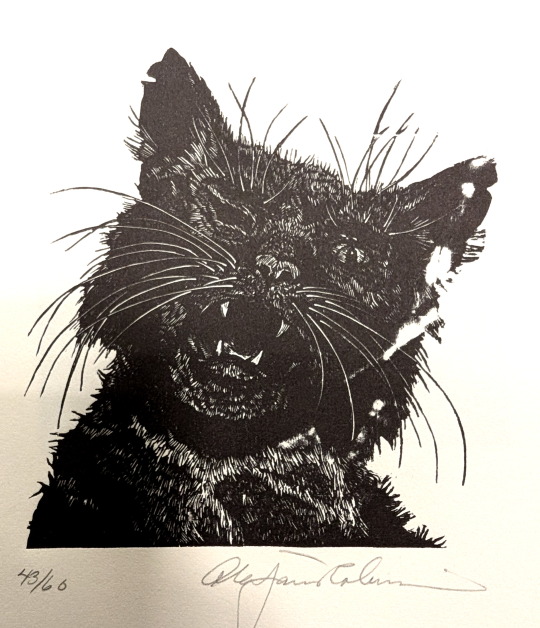

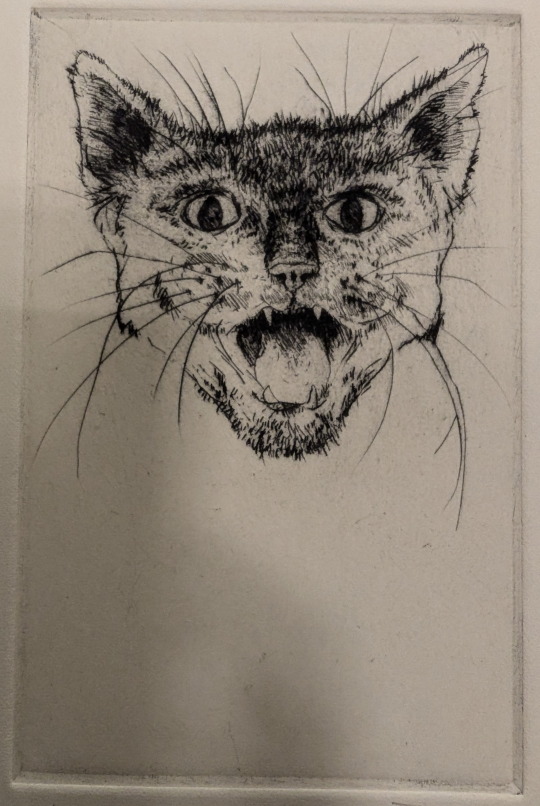
Scary kitties!
Poe, Edgar Allan, and Alan James Robinson. The Black Cat. [Deluxe ed.]. S.l: Cheloniidae Press, 1984.
PS2613 .A1 1984
#edgar allan poe#black cat#scary cat#scary kitty#cat#kitty#1980s#illustration#woodcut#halloween#spooky season#libraryofva#specialcollections#rarebooks
44 notes
·
View notes
Text
OK, so exactly noone asked for this but I have been reading a LOT of bioshock fanfiction lately and I think there are some real gems on ao3 that I’d like to bring attention to. So here they are, mixed with some more obviously popular ones---
Bioshock fic recs GO!!!!
ONE SHOTS--
--Found Is Lost and Lost Is Found by thewickedkat-- “What if there had been a Little Sister who hadn’t wanted to be rescued?” REALLY GOOD, but heed the trigger warnings in the tags!!!
--results, not causes by cheloniidae “Diane doesn’t need a pretty face to fight in the war.”
--they shake the mountains when they dance by coricomile-- “Around her, the splicers scream.”
--Just Put (Me) To Work by rataplani-- “A tribute to the nameless protagonists of the Protector Trials.”
--Chasing Shadows by cloudeme-- “ She is the first Big Sister, and will probably be the last. She knows she's different, but she doesn't care. She does her job... and hates.”
MULTICHAPTER--
-hey mister, don’t I know you? by presidenthomewrecker -- COMPLETE-- the one where Anna Culpepper runs Fort Frolic when you come through!!! a really great story that I really enjoyed. this author in general is worth checking out, they’ve written more than one awesome fic!!
-The Closing of Watchful Eyes by FOzziliZ3d-- COMPLETE-- “In which Mark Meltzer is saved by Subject Delta in Dionysus Park.”
-lay her i’ th’ earth by poppywine-- COMPLETE-- “ And I can teach thee, coz, to shame the devil—By telling the truth. Tell truth and shame the devil.” Jasmine Jolene haunts Ryan’s bitch ass and it’s wonderful.
-Watch Over Me by cakeisatruth-- COMPLETE-- “ Little Sisters can be cured in a matter of seconds, but it takes far longer for one to overcome everything she's been brainwashed to believe.” A really good fic from the perspective of a recovering Little Sister!! I especially love this fic.
-Bei Mir Bist Du Sheon by poppywine-- WIP-- “ Brigid Tenenbaum has put the worst of Rapture behind her. That's the good news. The bad news is that a part of it is now standing on her porch.” As stated, this fic is still in progress, but the writing is wonderful, and I’m really excited to see where it goes!!
-With Friends Like These.... by gummysharksupremacy --WIP--- this one is actually about remorseful!Bad End Jack which I found intriguing from the start!! Basically he wakes up after the events of the game and is trying to make his way out of Rapture. Has some Infinite/BAS elements but I havent played either of those and it didn’t hinder my enjoyment of the fic. Honestly can be enjoyed as a standalone and is a really awesome fic!!
-Atonement for Bygone Sins by foorocks10-- WIP-- “Delta wakes in the ashes of failure. In the ashes of Rapture.Babylon has fallen. And yet Sophia Lamb seeks to build something greater and more terrible from Rapture's ashes.” I actually just discovered this one the other day!!
-Here Comes the Sun by Riddle_of_the_sphinx --WIP-- “There are others I must help before this city drowns..... or, basically Delta decides that he’s going to save as many people as he can so they can see the sun.” This fic actually had me laughing out loud, Delta has such a sassy inner commentary. I’m excited to see where this one goes, as well!!
-There Is No Rapture by necroticboop-- WIP-- this fic is basically a fleshing out of Brigid Tenenbaum’s whole backstory and it is SOOOO GOOD omg. If you like Brigid please read this story and give the author some feedback because it is SO. GOOD.
-Underwater Eden by jadrea-- WIP-- “It is much to his surprise that Augustus Sinclair finds he's alive.” This one’s got MAPS and stuff like those really good fantasy books from middle school. Promising, I must say, LOL.
-The Prodigal Son by malice-and-macarons-- WIP--”Atlas wakes up.Death, he thinks, would have been kinder.” I think this one is actually pretty popular amongst the Bioshock fanbase (small as it may be) but just in case you havent seen it, here it is!!
Final note: I know we all love the instant gratification of already completed fic, and don’t like waiting for updates (I know, me too!) but I encourage anyone looking for something to read to give the WIP’s a try, and leave nice comments for the authors if you enjoyed the story! It’s hard to write when you feel like noone cares. If you want content, you have to validate the content creators!!
All the fics on this list are awesome, and thanks to all the creators for producing and sharing these stories!!
#bioshock#bioshock fanfiction#fic recs#idk if ANYONE will care about this#but i have been reading a LOT of bioshock fanfic#the fandom is not dead!!! we got shooters out here yall!!!#so i just wanted to bring some attention to some awesome fics if i could#especially the wips#because seriously!!! we have to encourage the content we want to see!!!
74 notes
·
View notes